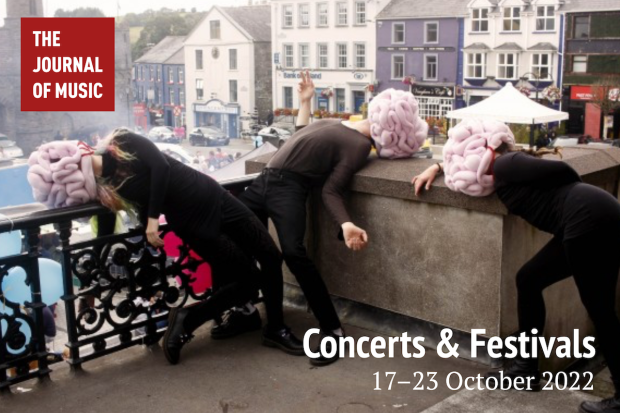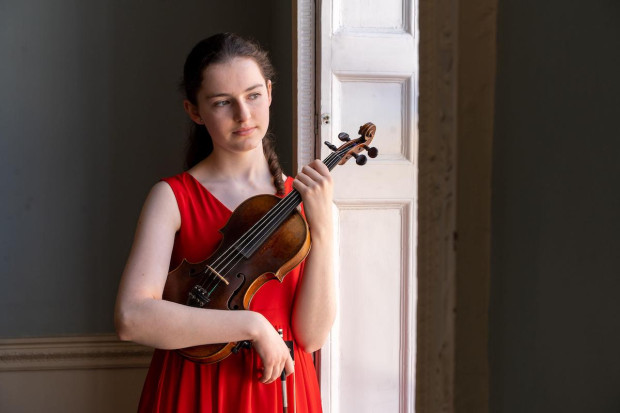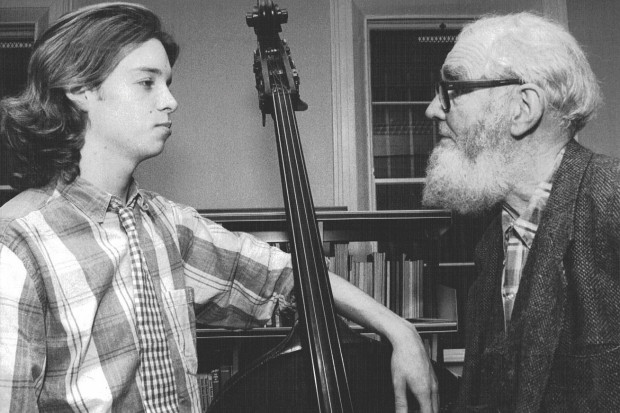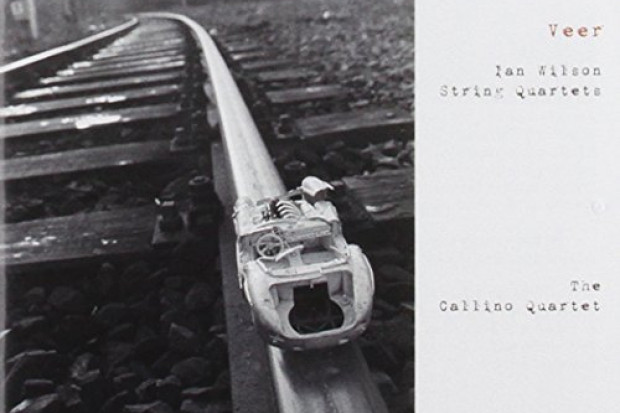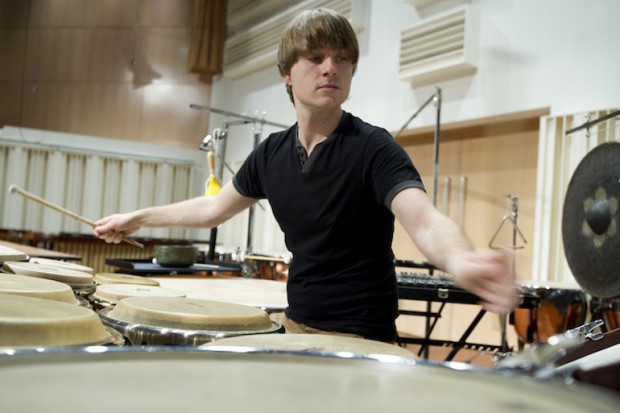
Composer Kate Moore
Natural New Directions
The past hundred years have seen profound developments in the timbre of classical music. There have been developments in electronic music, of course, but the timbral palette of most ‘standard’ classical instruments has expanded dramatically, and whole worlds of new works have opened up for solo instruments that had never had their time in the spotlight, or for groups of instruments that had never been conceived together previously. So it is for Totemic, the new album from violist Nathan Sherman and percussionist Alex Petcu.
The pair of instruments does have an existing repertoire, though a limited one. The Australian composer Peter Sculthorpe wrote the earliest work I know of, a 12-minute sonata, in 1960. But for the most part the repertoire has to be assembled – and often commissioned – by the performers. In that vein, this release features two new commissions – Benedict Schlepper-Connolly’s One Thing I Know and Crucible by Kate Moore – and a further work written within the last year – Ian Wilson’s Totemic, for which the album is named. Wilson’s work is meant as a response to the only major repertoire work for the pairing, Luciano Berio’s Naturale, and those two works sandwich the new commissions on the album. The album launch at New Music Dublin earlier this year also featured works by Missy Mazzoli and François Sarhan.
Berio’s work comes from 1985, and is a development of material he wrote for the earlier viola-and-orchestra work, Voci. It uses recordings the composer made of a folk singer in Palermo, exploring the less dressed-up, more ‘natural’ sound of folk music in which he was interested. There’s something primordial about the opening. It’s in the rawness of the singer’s voice, and in the grasping, straining viola, and in the rattling percussion. But as it moves, the piece weaves in and out of these sounds, finding moments of tranquil beauty and bounding joy.
Sherman in particular plays into the folk sounds of the score, his sound by turns rich and raw. Petcu plays with his customary precision, providing a shimmering background for the viola and voice.
If Naturale centred the viola, Schlepper-Connolly’s One Thing I Know does the opposite. Here, a crystalline gamelan-focused groove hides a deceptively complex beat. The composer acknowledges the influence of German electronica, and some of the instruments – several of which were built by the performer – do an excellent impersonation of electronic high hats and a snare drum. Against it, the viola floats dreamily, supporting without ever intruding.
It’s rare that I hear a piece have such dramatically different effects on repeated listenings. I have found, alternately, that it coalesces to a complex climax, the snare sound becoming more central and intricate, and that it crumbles away to nothing, with the harmony drifting and collapsing. Both are true. Better to think of it, maybe, as something observing and observed, an abstract shape, the form of which depends on the observer’s mood and state of mind.
Moore’s Crucible, named for Arthur Miller’s play and scored for marimba and viola, is built on an unsettled four-chord loop. The early parts in particular create a palpable tension, with the instruments swelling again and again from very soft to loud. In fact the dynamics feel as if they’re the driver of the work, plunging one way or the other while the harmony and melody remain centred.
A sense of the natural
Wilson’s Totemic was written partly as a response to Naturale, and there’s a sense of the natural right from the start, the viola and percussion combining to create an eerie wind. Instrumental sounds manifest occasionally – a pitch intruding from col legno bowing, a recognisable cymbal rattle – but we are minutes into the piece before the first definite note, a long, low tone on the viola. This evolves into a mournful melody with the percussion accompanying.
The work evolves from here almost episodically, exploring quiet sounds and gestures made with combinations of instrumental timbres. The overall effect is nocturnal, quiet and dark. Even the brighter passages, like late sections combining high viola melodies with celesta, emphasise this effect rather than undercutting it, played as if part of a ritual, or like a slant of light in a dark room.
Ironically, given its title, and unusually for an Ergodos release, Totemic feels like an album pulled in four directions at once. The forceful gestures of the Berio, Schlepper-Connolly’s cool trance, the tightrope walk of Moore’s piece, and the nocturnal stillness of Wilson’s each works in isolation, and I’ve found myself returning to each one alone several times.
But at the centre stand Petcu and Sherman, giving a commanding and assured performance of each work. The combination of percussion and viola is unusual – not least because of the amorphous nature of percussion alone – but effective, a fusion of hard and soft sounds with a wealth of combinatory possibilities. The breadth of styles and of timbres may splinter the album, but it gives them a wide arena to showcase their skill and their sound.
Totemic is released on the Ergodos label. To purchase a limited edition CD, visit https://ergodos.bandcamp.com/album/totemic.
Published on 2 June 2022
Brendan Finan is a teacher and writer. Visit www.brendanfinan.net.










